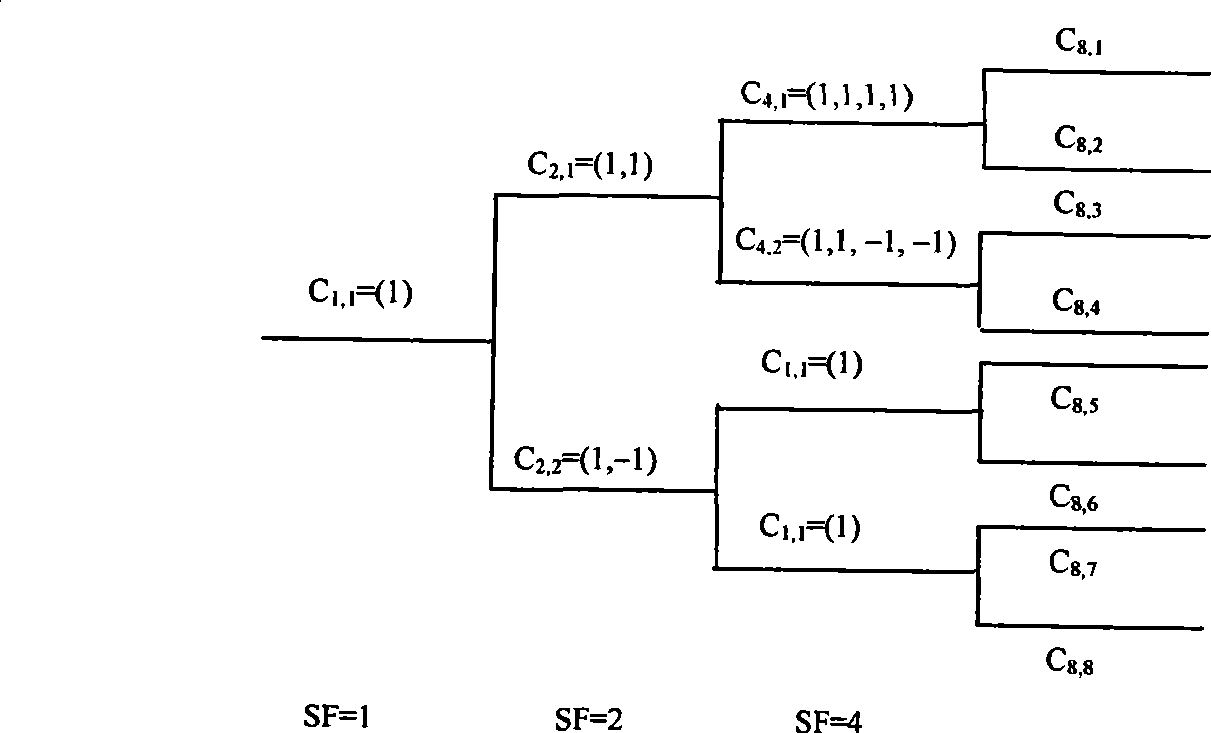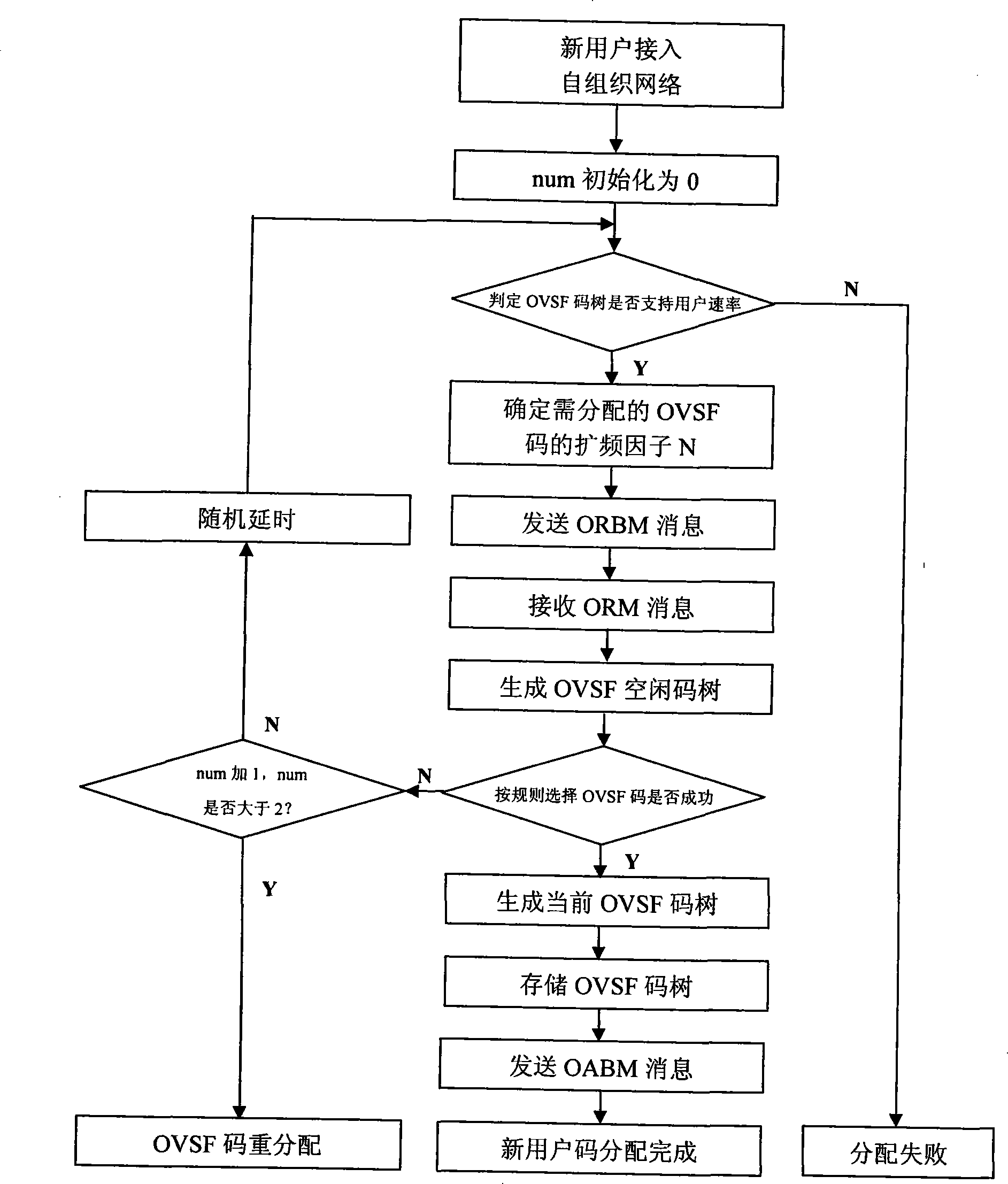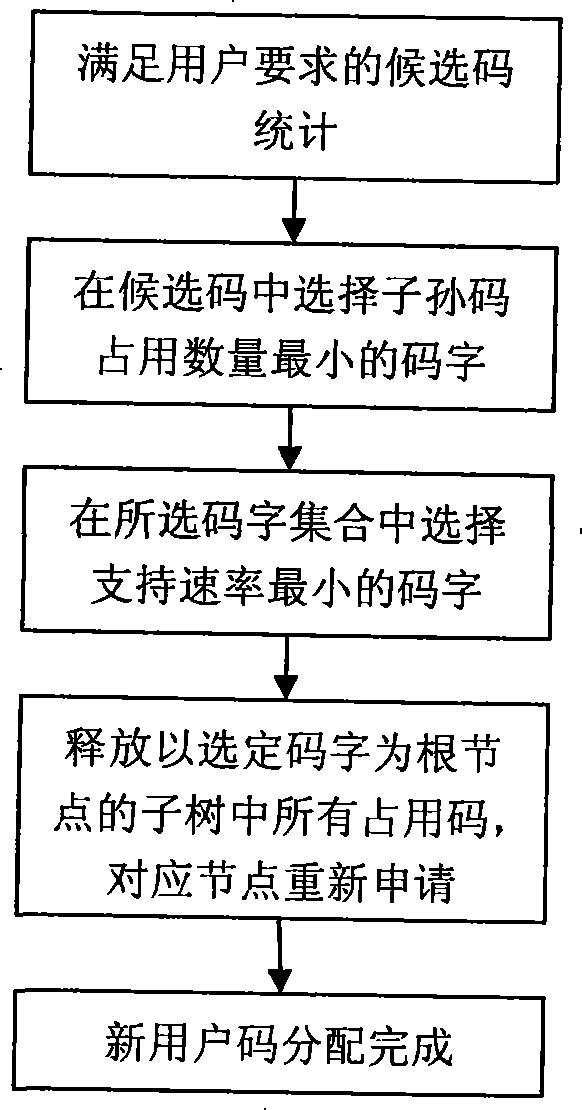Self-organized network frequency spreading allocation method based on time division synchronization code multiple address
A technology of self-organizing network and code division multiple access, which is applied in the field of OVSF code dynamic allocation, can solve problems such as the inability to allocate spreading codes, and achieve the effects of controlling the implementation complexity, preventing broadcast storms, and high code word reuse rate
- Summary
- Abstract
- Description
- Claims
- Application Information
AI Technical Summary
Problems solved by technology
Method used
Image
Examples
Embodiment Construction
[0058] The present invention is based on the specific realization of the ad hoc network spreading code distribution method of time division synchronous code division multiple access including the following steps:
[0059] Step 1: Spreading code OVSF application stage: by exchanging messages on the public control channel and formulating codeword search rules to complete the allocation of spreading codes to new users;
[0060] The second step: the OVSF redistribution stage of the spreading code: redistribute the codewords that generate code blocking;
[0061] Step 3: Spreading code OVSF maintenance stage: By means of exchanging messages on the public control channel, update the spreading code tree information stored by each node;
[0062] Step 4: Spreading code OVSF release stage: according to the spreading code tree, correspondingly release the occupied codeword and its parent code and child code.
[0063] After the network nodes in the self-organizing network based on the TD-...
PUM
 Login to View More
Login to View More Abstract
Description
Claims
Application Information
 Login to View More
Login to View More - R&D
- Intellectual Property
- Life Sciences
- Materials
- Tech Scout
- Unparalleled Data Quality
- Higher Quality Content
- 60% Fewer Hallucinations
Browse by: Latest US Patents, China's latest patents, Technical Efficacy Thesaurus, Application Domain, Technology Topic, Popular Technical Reports.
© 2025 PatSnap. All rights reserved.Legal|Privacy policy|Modern Slavery Act Transparency Statement|Sitemap|About US| Contact US: help@patsnap.com



